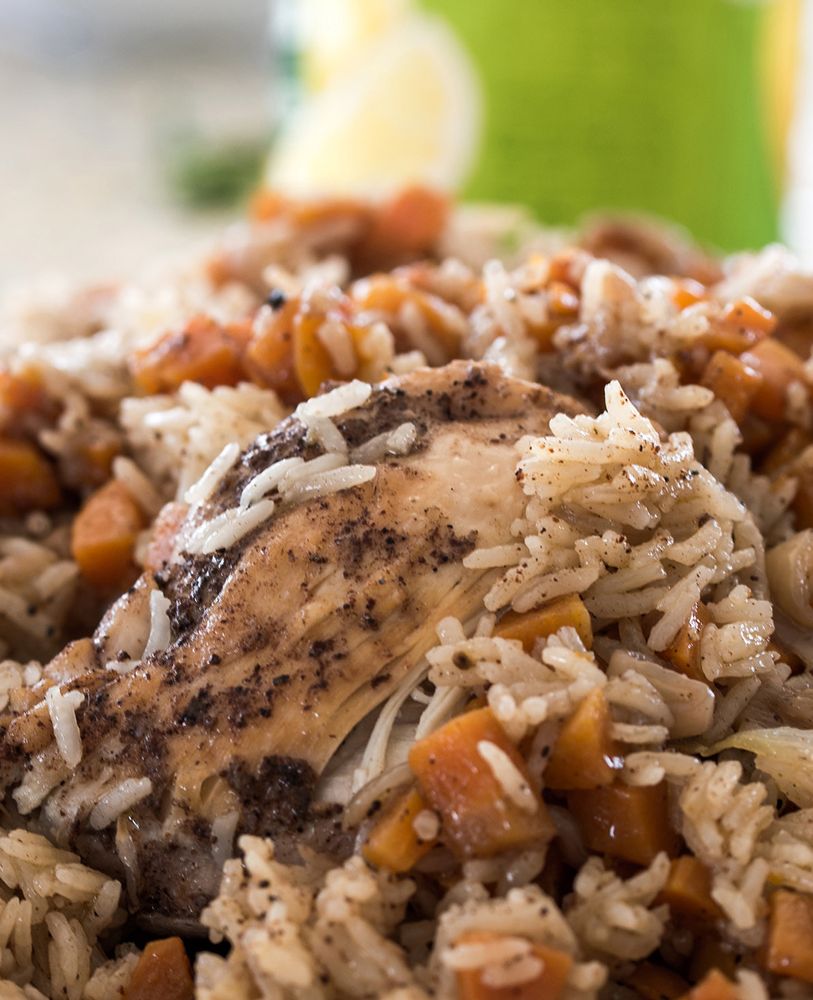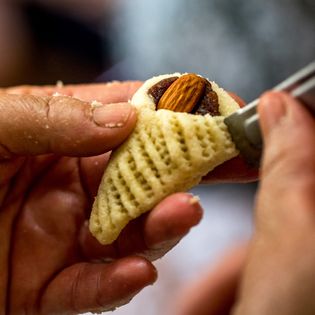
Rustic Arabic cuisine – highlights from The Galilean Kitchen
The recipes in Ruth Nieman's book are homely dishes, suitable for all the family and easy to cook, giving an authentic insight into the ancient Arabic cuisine.
Maklouba, literally translated from the Arabic meaning “upside down”, is a traditional dish that was served to the caliphs in the grand feasts of the Ottoman Empire. It is a rice-based one pot dish with meat and vegetables that once cooked is turned upside down onto a serving plate, hence its name.
Machmar is nothing short of an Arabic pizza and a wonderful family dish. The flatbread is covered in soft, caramelised onions flavoured with the citrussy sumac and chunks of sweet chicken is strewn over the top, or in true Arabic style, a whole chicken leg!
Majadara can be found in the 13th century cookbook Kitab al-Tabikh (Book of Dishes), containing lentils, rice and meat and is reputed to be the meal Jacob cooked to buy Esau’s birth right and the lentil stew became known as “mess of pottage” Genesis 25:29–34.
Maamoul are highly decorated, festive Arabic biscuits made with semolina flour and filled with dried fruits, usually dates and nuts. Hundreds of these hand crimped biscuits are made for celebratory meals such as the Iftar, Easter or wedding breakfasts.
Khubz are whole wheat pittas No Arabic meal is complete without a dough-based element, and these are easy to make and even easier to eat. They can be used to mop us the juices from the plate, topped with herbs and cheese or a tomato paste, or filled to the brim with hummous, tahina and pickles.
Maklouba, literally translated from the Arabic meaning “upside down”, is a traditional dish that was served to the caliphs in the grand feasts of the Ottoman Empire. It is a rice-based one pot dish with meat and vegetables that once cooked is turned upside down onto a serving plate, hence its name.
Machmar is nothing short of an Arabic pizza and a wonderful family dish. The flatbread is covered in soft, caramelised onions flavoured with the citrussy sumac and chunks of sweet chicken is strewn over the top, or in true Arabic style, a whole chicken leg!
Majadara can be found in the 13th century cookbook Kitab al-Tabikh (Book of Dishes), containing lentils, rice and meat and is reputed to be the meal Jacob cooked to buy Esau’s birth right and the lentil stew became known as “mess of pottage” Genesis 25:29–34.
Maamoul are highly decorated, festive Arabic biscuits made with semolina flour and filled with dried fruits, usually dates and nuts. Hundreds of these hand crimped biscuits are made for celebratory meals such as the Iftar, Easter or wedding breakfasts.
Khubz are whole wheat pittas No Arabic meal is complete without a dough-based element, and these are easy to make and even easier to eat. They can be used to mop us the juices from the plate, topped with herbs and cheese or a tomato paste, or filled to the brim with hummous, tahina and pickles.
Sort by:
Advertisement





